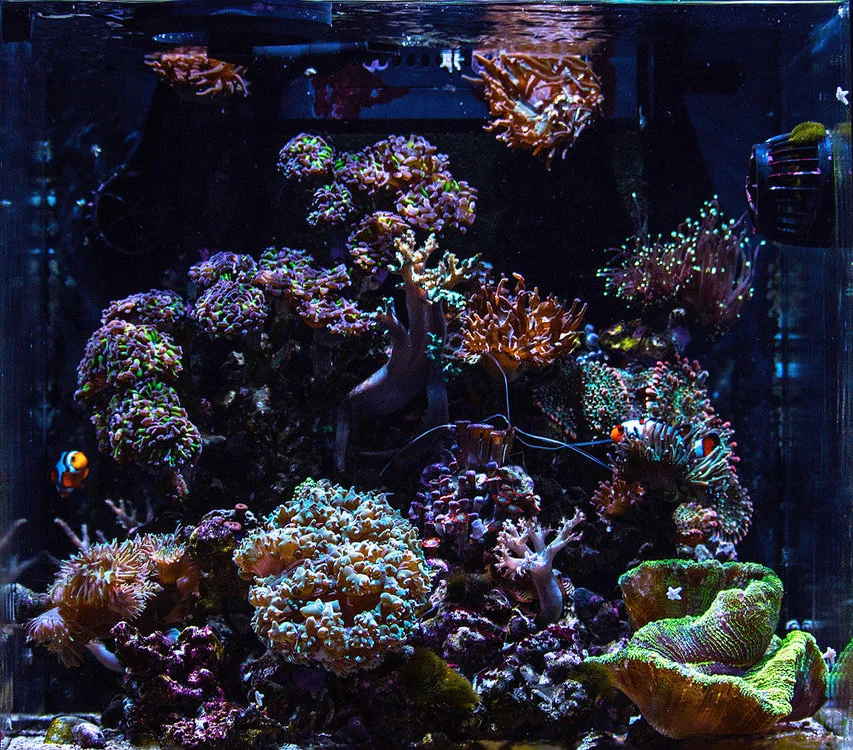Stunning 21-Gallon Reef Tank – KuruptPixel's TOTM | NanoReef

Tank Specifications
Volume: 21 Gallons / 79 Liters
Dimensions (L × W × H):
18.0" ×
18.0" ×
18.0"
45.7cm ×
45.7cm ×
45.7cm
Equipment List
- Salt: Red Sea
Frequently Asked Questions
How do I start a reef tank from scratch?
Starting a reef tank involves several steps: select an appropriate tank size based on your available space and budget, choose the right equipment (lighting, filtration, skimmers, etc.), set up your tank with substrate and rock, and run the system to cycle the tank before introducing any livestock.
What equipment do I need for a 21-gallon nano reef tank?
For a 21-gallon nano reef tank, essential equipment includes: lighting (like a Kessil LED), heater (e.g., 75W NeoTherm), water circulation pumps, a filtration system (with a quality skimmer), and testing kits for water parameters.
How do I maintain proper water parameters in my reef tank?
Maintaining proper water parameters involves regular water testing and water changes. Check for parameters such as salinity, temperature, pH, alkalinity (ALK), nitrates (NO3), and phosphates (PO4). Make adjustments through water changes, dosing, and filtration.
What is a good maintenance routine for a reef tank?
A good maintenance routine includes weekly water changes (about 5 gallons), checking filters and skimmers, vacuuming the substrate, inspecting water parameters, and cleaning equipment as needed. This routine can be simplified to bi-weekly water changes if the tank remains stable.
How do I do a water change efficiently?
To perform an efficient water change, prepare a water station with RO/DI water and salt mix, allowing it to mix and temperature to stabilize overnight. Use a pump and hose system to refill the tank easily, avoiding heavy lifting and mess.
How often should I test my water parameters?
It's advisable to test critical parameters like alkalinity weekly and to conduct other tests (like nitrates and phosphates) at least once a month. Regular inspections for any visual signs of trouble can help catch issues before they develop.
What do I feed my reef tank inhabitants?
Feed a varied diet including Mysis shrimp, Krill, and Arcti-Pods. A mix of prepared foods like Reef Roids and liquid supplements such as Red Sea Reef Energy can supplement the diet and promote coral health.
How can I dose nutrients correctly in my reef tank?
Dosing should be done carefully according to the needs of your coral and tank inhabitants. Start with small amounts of liquid nutrients (e.g., Red Sea NO3-PO4-X and Trace Colors) every few weeks, monitoring changes in water parameters and coral health.
What types of corals are suitable for a nano reef tank?
Soft corals like Zoanthids, Star Polyps, and Mushrooms are often ideal for nano reefs, along with some LPS corals like Duncan and Hammer corals. Aim for corals that have similar light and water flow requirements for successful growth.
How should I introduce new fish into my reef tank?
Quarantine new fish for at least two weeks before introducing them to your main tank to prevent disease. When ready, acclimate them slowly by floating the bag in the tank and gradually mixing tank water into the bag before release.